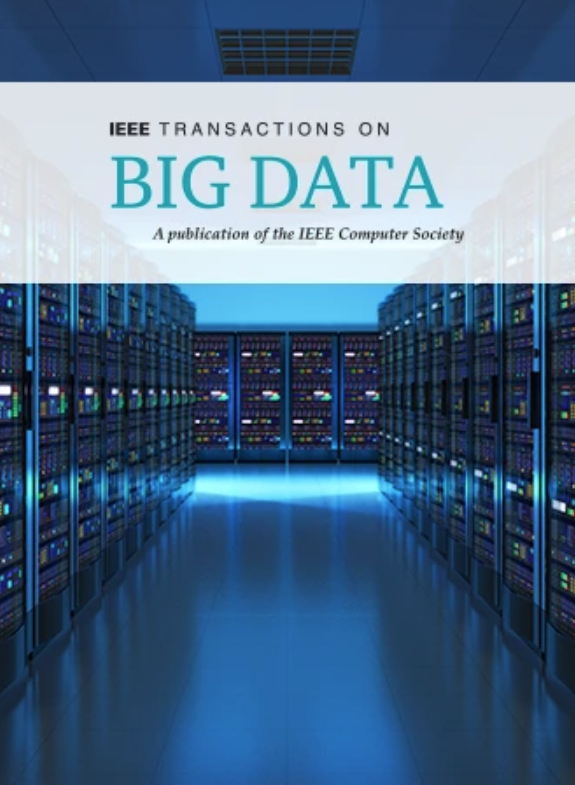MSST: Multi-Scale Spatial-Temporal Representation Learning for Trajectory Similarity Computation
IF 5.7
3区 计算机科学
Q1 COMPUTER SCIENCE, INFORMATION SYSTEMS
引用次数: 0
Abstract
Computing trajectory similarity is a fundamental task in trajectory analysis. Traditional heuristic methods suffer from quadratic computational complexity, which limits their scalability to large datasets. Recently, Trajectory Representation Learning (TRL) has been extensively studied to address this limitation. However, most existing TRL algorithms face two key challenges. First, they prioritize spatial similarity while neglecting the intricate spatio-temporal dynamics of trajectories, particularly temporal regularities. Second, these methods are often constrained by predefined single spatial or temporal scales, which can significantly impact performance, since the measurement of trajectory similarity depends on spatial and temporal resolution. To address these issues, we propose MSST, a Multi-Scale Self-supervised Trajectory Representation Learning framework. MSST simultaneously processes spatial and temporal information by generating 3D spatial-temporal tokens, thereby capturing spatio-temporal characteristics of trajectories more effectively. Further, MSST explore the multi-scale characteristics of trajectories. Finally, self-supervised contrastive learning is employed to enhance the consistency between the trajectory representations from different views. Experimental results on three real-world datasets for similarity trajectory computation provide insight into the design properties of our approach and demonstrate the superiority of our approach over existing TRL methods. MSST significantly surpasses all state-of-the-art competitors in terms of effectiveness, efficiency, and robustness. We explore the multi-scale characteristics of trajectories. To the best of our knowledge, this is the first effort in the TRL literature. Compared to previous TRL research, the proposed method can balance the noise and the details of trajectories, enabling a more comprehensive analysis by accounting for the variability inherent in trajectory data across different scales.轨迹相似度计算的多尺度时空表征学习
轨迹相似度计算是轨迹分析中的一项基本任务。传统的启发式方法具有二次型计算复杂度,限制了其在大型数据集上的可扩展性。最近,轨迹表示学习(TRL)得到了广泛的研究,以解决这一限制。然而,大多数现有的TRL算法面临两个关键挑战。首先,他们优先考虑空间相似性,而忽略了轨迹复杂的时空动态,特别是时间规律。其次,这些方法通常受到预定义的单一空间或时间尺度的限制,这可能会严重影响性能,因为轨迹相似性的测量取决于空间和时间分辨率。为了解决这些问题,我们提出了多尺度自监督轨迹表示学习框架MSST。MSST通过生成三维时空标记同时处理空间和时间信息,从而更有效地捕获轨迹的时空特征。此外,MSST还探索了轨迹的多尺度特征。最后,采用自监督对比学习来增强不同观点的轨迹表征之间的一致性。在三个真实数据集上进行相似轨迹计算的实验结果揭示了我们的方法的设计特性,并证明了我们的方法优于现有的TRL方法。MSST在有效性,效率和稳健性方面显著超过所有最先进的竞争对手。我们探索了轨迹的多尺度特征。据我们所知,这是TRL文献中的第一次尝试。与以往的TRL研究相比,该方法可以平衡噪声和轨迹细节,通过考虑不同尺度轨迹数据固有的可变性,实现更全面的分析。
本文章由计算机程序翻译,如有差异,请以英文原文为准。
求助全文
约1分钟内获得全文
求助全文
来源期刊

IEEE Transactions on Big Data
Multiple-
CiteScore
11.80
自引率
2.80%
发文量
114
期刊介绍:
The IEEE Transactions on Big Data publishes peer-reviewed articles focusing on big data. These articles present innovative research ideas and application results across disciplines, including novel theories, algorithms, and applications. Research areas cover a wide range, such as big data analytics, visualization, curation, management, semantics, infrastructure, standards, performance analysis, intelligence extraction, scientific discovery, security, privacy, and legal issues specific to big data. The journal also prioritizes applications of big data in fields generating massive datasets.
 求助内容:
求助内容: 应助结果提醒方式:
应助结果提醒方式:


